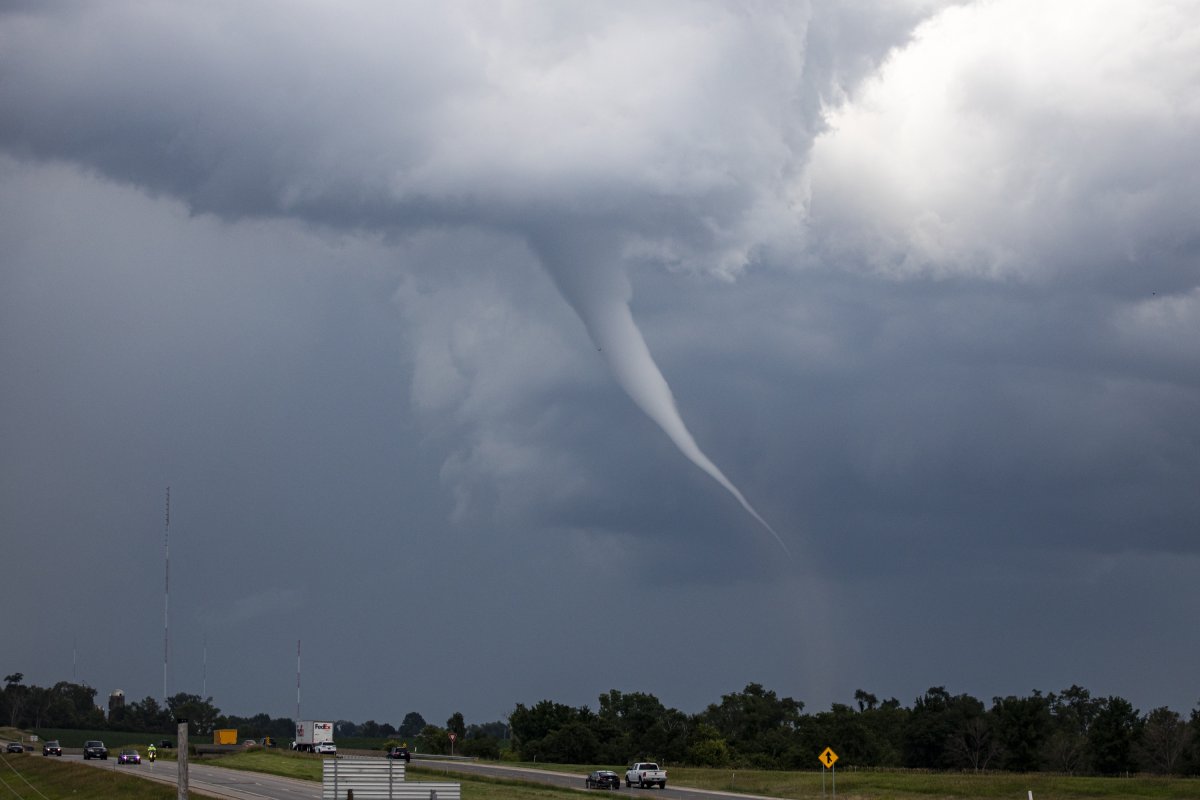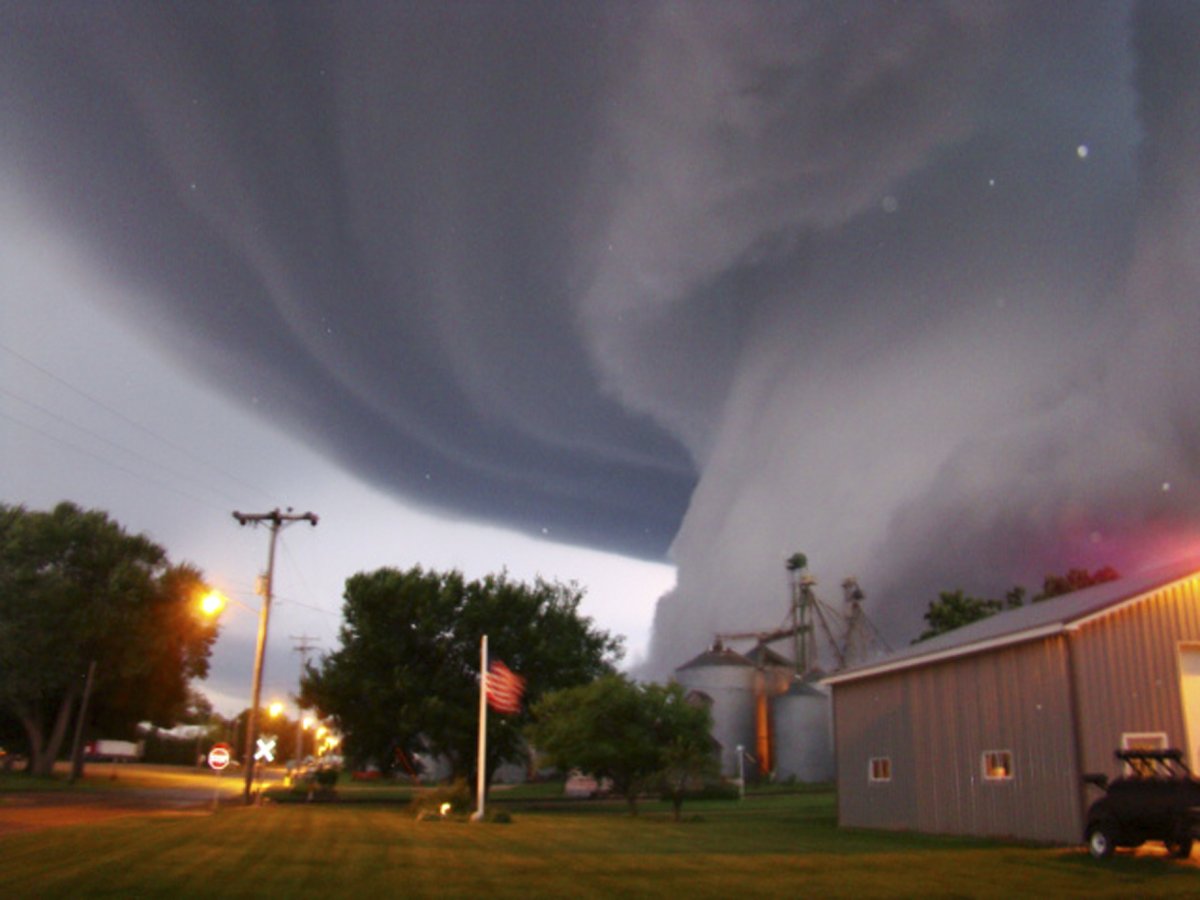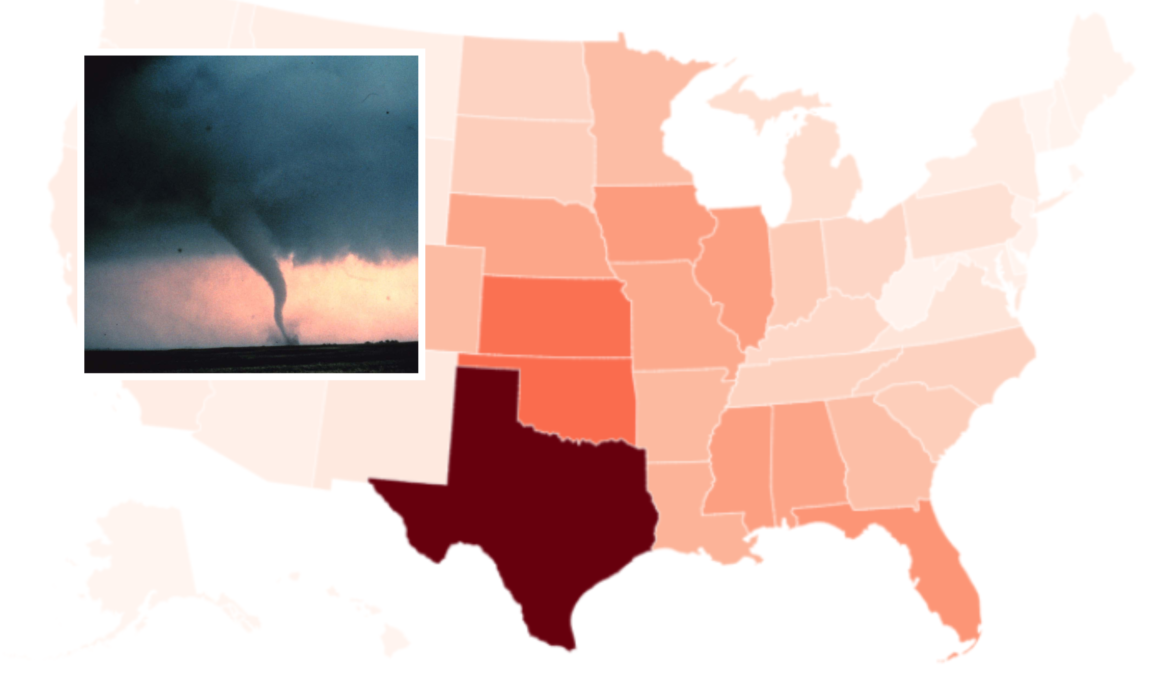Tornados are among the most destructive natural phenomena in the U.S., occurring frequently across various regions.
Newsweek has mapped out data from the National Oceanic and Atmospheric Administration’s (NOAA) National Centers for Environmental Information, showing which states have had the most tornados between January 1950 and May this year.
What Is a Tornado?
A tornado is defined by NOAA as “a violently rotating column of air, usually pendant to a cumulonimbus, with circulation reaching the ground. It nearly always starts as a funnel cloud and may be accompanied by a loud roaring noise. On a local scale, it is the most destructive of all atmospheric phenomena.”
More From Newsweek Vault: 5 Steps to Build an Emergency Fund Today
Tornados are narrow and extend from the base of a thunderstorm to the ground. They are only visible if they form a condensation funnel made up of water droplets, dust and debris, according to FEMA.
These storms can produce winds over 200 miles per hour, causing catastrophic damage. Tornado strength is categorized by the Enhanced Fujita (EF) scale, ranging from EF0 (weakest) to EF5 (strongest), according to the National Weather Service.

Which States Have the Most Tornados?
The data shows that Texas tops the list with the highest number of tornados, recording 9,731 since 1950. This makes Texas the most tornado-prone state in the country, largely due to its position within Tornado Alley—a region where cold air from Canada meets warm, moist air from the Gulf of Mexico, creating ideal conditions for tornado formation.
More From Newsweek Vault: Compare the Best Banks for Emergency Funds
Oklahoma follows closely with 4,784 tornados, and Kansas ranks third with 4,640 tornados. Both states are also located in Tornado Alley, explaining their high tornado counts. Florida, with 3,569 tornados, and Illinois, with 3,261, round out the top five.
Which States Have the Least Tornados?
At the other end of the spectrum, Alaska has experienced the fewest tornados, with only 4 recorded since 1950. Rhode Island and Hawaii have also seen low tornado activity, with 19 and 42 tornados, respectively. Vermont and Delaware follow, with 50 and 77 tornados.
More From Newsweek Vault: Learn More About the Different Types of Savings Accounts

What Precautions Can Be Taken To Protect From Tornados?
Tornados pose significant risks, including the destruction of homes, uprooting of trees, and severe injuries or fatalities. For residents in tornado-prone areas, having a safety plan is essential.
The American Red Cross has shared key advice for staying safe around tornados. According to the charity, it is key to know the difference between a tornado watch and a tornado warning.
A Tornado Watch means that tornados are possible in and near the watch area.
A Tornado Warning means that a tornado is near, there is danger, and you must move to a safe location.

The American Red Cross advises the following safety precautions:
Practice Tornado Drills: With your household, practice moving quickly to safe locations and create a personal support team of people.
Plan to Stay Connected: Sign up for free emergency alerts from local government, plan to monitor local weather and news, have a backup battery or an alternative way to charge your cell phone.
Gather Emergency Supplies: Make sure you have food, water and medicine. Have a go-kit to last you three days, and a stay-at-home kit to last 2 weeks.
Learn Emergency Skills: Learn First Aid and CPR to help others.
Do you have a story Newsweek should be covering? Do you have any questions about this story? Contact LiveNews@newsweek.com.








